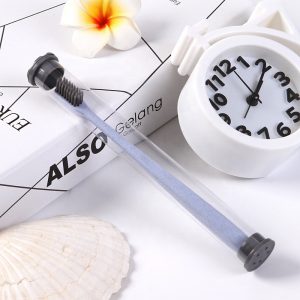Recently, many friends will ask similar questions: the difference between a sonic toothbrush and an electric toothbrush
Then, I will patiently explain each time: electric toothbrushes include sonic and rotary. What you need to understand is the difference between sonic electric toothbrush and rotary, and how to choose an electric toothbrush that suits you.
Today, Yangzhou electric toothbrush manufacturers will work with you to understand the nature, difference, and advantages and disadvantages of sonic and rotary electric toothbrushes from simple to deep aspects in terms of working principle, parameter mode, performance comparison, and sensory comparison.
Part1: The working principle of electric toothbrush
Sonic electric toothbrush: This type of electric toothbrush uses electromagnetism to drive a micro-motor to move, driving the brush head and bristles to produce high-speed mechanical vibrations. Because the high-frequency vibration generated by the drive is similar to the vibration frequency of the sound wave, it is called a sonic electric toothbrush.
Rotary electric toothbrushes: This kind of electric toothbrushes are relatively simple in operation. They simply use a small motor to drive the brush head to make a left-right rotation similar to a pendulum.
Part2: Parameter mode of electric toothbrush
Sonic electric toothbrush: specifically considering two parameters, vibration frequency and vibration amplitude. Generally, the range of sonic vibration amplitude is stable, between 4-6mm (for example, Philips is 5-6mm, and eruption is 4-5.5mm).
Due to the large market share of sonic electric toothbrushes, there is a big difference in vibration frequency: ranging from several thousand to tens of thousands of times per minute. Because the higher the working frequency of the brush head, the better the relative cleaning effect (high-frequency vibration can mix toothpaste and water, produce a large number of tiny bubbles, and clean the teeth deeply). Therefore, the vibration frequency of 30,000 times per minute has become the starting speed of the high-end products of various brands.
Rotary electric toothbrush: The only parameter is the rate of rotation. The domestic rotary electric toothbrush market is relatively small, mainly Oral B (rotation rate is 7600-8800 times/min). Generally, for mid-to-high-end rotary products, the rotation data is basically 8000 times per minute.
Part3: Performance comparison of Yangzhou electric toothbrush manufacturers
The performance comparison of electric toothbrushes mainly starts from two aspects: relative cleanliness and tooth wear.
Relative cleanliness: In the same brushing time, the rotating electric toothbrush is more efficient than the sonic type, and the brush is cleaner. However, the general brushing time varies from person to person, and longer brushing time can achieve the same cleaning effect.








